Having just tied the anchor rope, Mr. Nguyen Quang Hung, resident of Cua Viet commune, owner of the boat QT 94522TS, shared: “This season, the mackerel fish are running in strong schools. About 8-12 nautical miles away, if you see seabirds flapping continuously and the water bubbling, there is a high possibility that there is a school of fish gathering below.” From the story with Mr. Hung, we can somewhat feel the atmosphere at the fishing port is filled with hope and determination.
Turn the waves in the middle of the night sea
After an early dinner, at around 6:30, dozens of ships left the dock one after another. Outside, the sea was dark and vast. The lights from the bows swept across, leaving shimmering streaks of light on the water. The farther Mr. Hung’s ship sailed, the stronger the salty wind became, and the more intense the sound of waves crashing against the side.
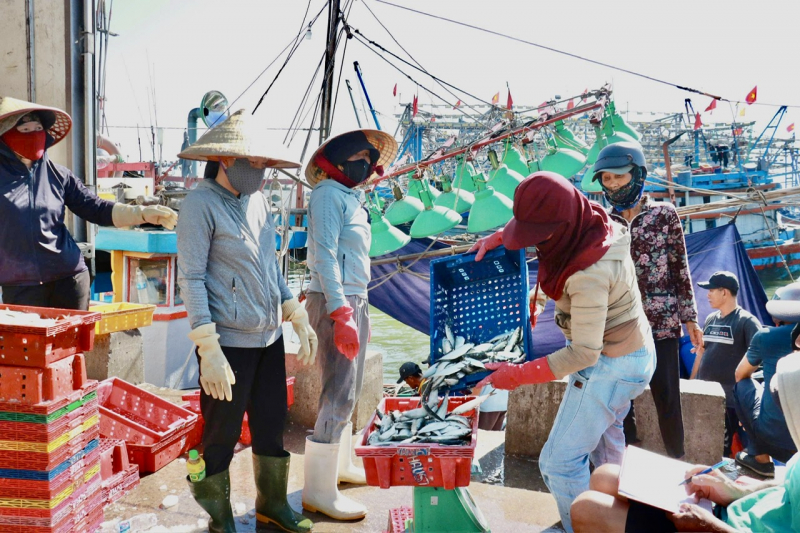
After more than an hour of sailing, the captain received the signal: “Look! The birds are gathered there, there are fish!”. Without anyone telling anyone, everyone immediately got into position. The long net plunged into the sea, the headlights swept a bright area of water, revealing a school of mackerel wriggling white around the ship’s side. The roar of the engine, the squeaking of the towline mixed with the urgent shouts. The smell of fresh fish mixed with the salty smell of the sea spread throughout the deck. In the hold, each bucket of fish was dumped into the cold ice cellar, shimmering silver, the firm bodies thrashing violently, splashing water onto the floor. “This batch must be over a ton!”, a fisherman named Ly shouted, his voice drowning out the sound of the engine. Water mixed with a few fish scales flowed along the edge of the side to the back, the ship was gradually filling up with the bounty of the sea.
Before he could rest, the captain signaled the chief engineer to turn the ship around and continue searching for the foaming water in the distance. The headlights quickly swept across the sea, silver streaks flashed in the dark, signaling a new school of fish was gathering. The net was lowered again, the circle gradually tightened, the water boiled because the school of fish was being pushed. Sweat poured down on the forehead, mixed with the salty sea air. The sound of the engine, the screeching of the net, and the voices of people shouting loudly echoed throughout the night sea. On the deck, mackerel were continuously poured into the ice hold. "The sea has given us good fortune, let's try a few more batches!", Mr. Hung laughed loudly, his voice drowning out the sound of the engine.
Fishing wharf and bustling sea market
At around 8am, after more than a night at sea, Mr. Hung’s boat and many other fishermen arrived at Cua Viet port one after another. From the sea gate, the fishing port was as bustling as a big market. The rumbling sound of the boat’s engine, the calls to each other mixed with the smell of fresh fish, ice and a bit of pungent engine oil. Each batch of silver-shining mackerel was scooped from the ice cellar, and as soon as it was brought to the mouth of the hold, it was immediately poured into plastic baskets, covered with a layer of ice to keep it fresh.
As soon as the baskets of fish were brought to the dock, buyers and sellers crowded around them. Traders bent over to check each handful, carefully looking at the scales and gills of the fish to determine the price. “The fresh, crispy type with clear eyes costs 22,000 VND/kg, the slightly worse type costs 20,000 VND/kg,” said a trader as he inspected the goods, his hands constantly stacking fish into boxes. Fisherman Nguyen Huu Thanh finished selling the entire compartment of fish and breathed a sigh of relief: “This trip was very exciting. Let’s continue going out to sea in the afternoon!”
Along the Trans-Asia Highway running through Cua Viet Commune, dozens of fish steaming establishments are operating at full capacity. The steaming smoke mixed with the scent of sea fish wafts out onto the road. Each batch of mackerel after being purchased is cleaned, steamed for 3-5 minutes, then spread out on bamboo trays to dry in the sun. “Only in strong sunlight will the fish be crispy and fragrant. It takes three days to dry. Three kilos of fresh fish make one kilo of dried fish,” said Ms. Cuc, the owner of a fish steaming establishment here, while stirring the trays of fish. The fish steaming profession creates jobs for hundreds of workers, especially women, from the stages of preparing the fish, steaming, drying to packaging.
Not just a story of buying and selling, Cua Viet fishing port also reflects part of the health of Quang Tri's marine economy . According to the provincial Department of Agriculture and Environment, in the first 6 months of 2025, the total output of aquatic products exploited in the province is estimated to reach more than 66,500 tons, reaching 47.7% of the annual plan and equal to 101% compared to the same period in 2024. Of which, marine exploitation accounts for more than 55,000 tons; inland exploitation reaches nearly 2,600 tons; aquaculture reaches nearly 8,934 tons. The target for the whole year of 2025 is 139,270 tons, of which marine exploitation strives to reach 116,480 tons.
The marine resources in the nearly 8,400km² sea area of Quang Tri province are estimated at about 60,000 tons per year, with many valuable species such as mackerel, anchovy, mackerel, squid, etc. The government and relevant agencies have drastically applied measures to combat illegal fishing: Nearly 100% of fishing vessels have installed voyage monitoring equipment, registered and marked vessels, have fishing licenses, recorded and reported logbooks in accordance with regulations.
These measures not only ensure compliance with the law but also help fishermen raise awareness of protecting marine resources. “We live off the sea, so we must protect the sea so that our children and grandchildren will have fish to make a living,” Mr. Hung said firmly.
Source: https://cand.com.vn/doi-song/mua-san-ca-nuc-gai-o-quang-tri-i777972/




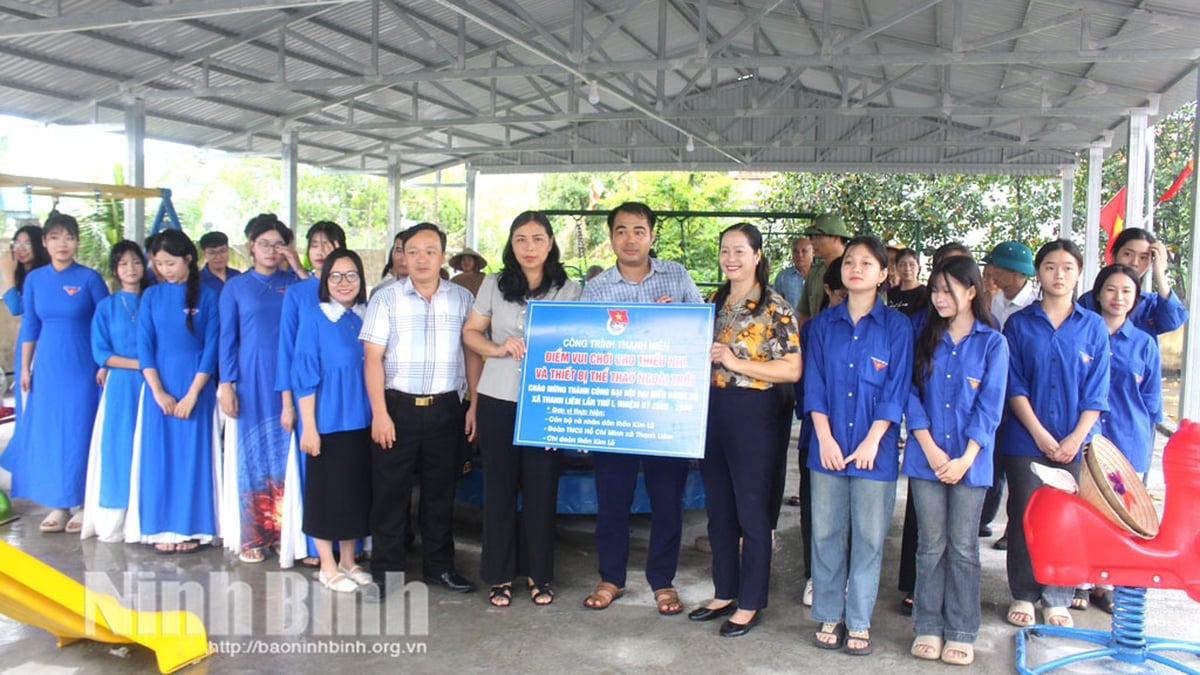



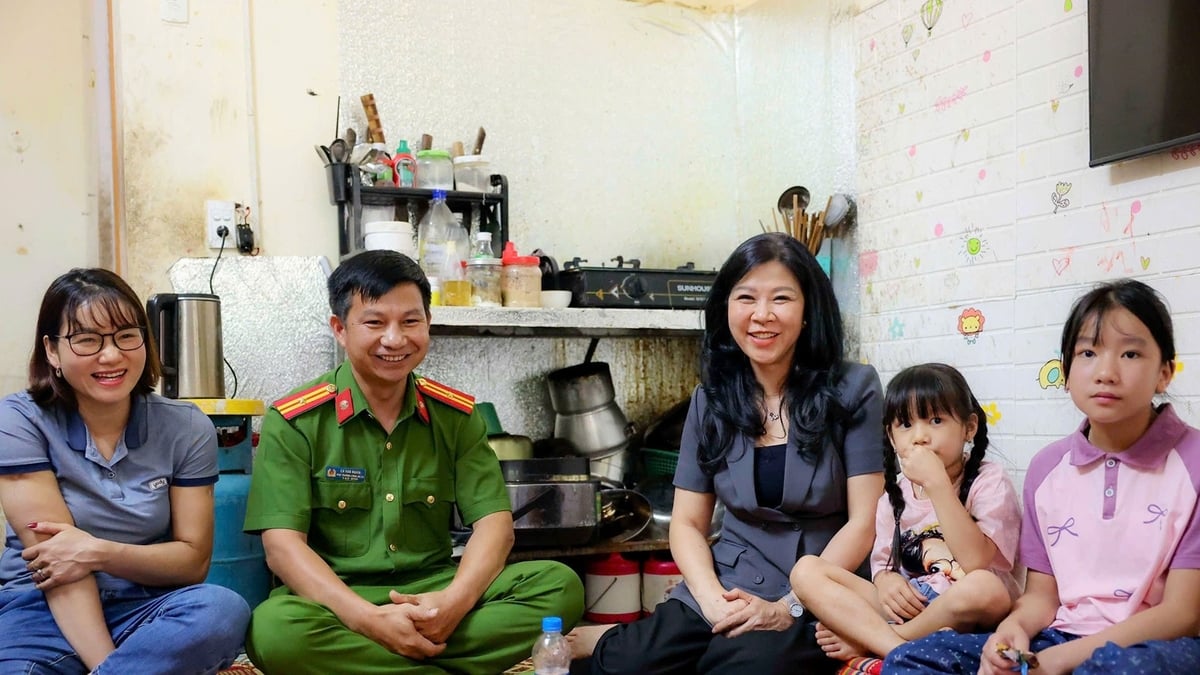

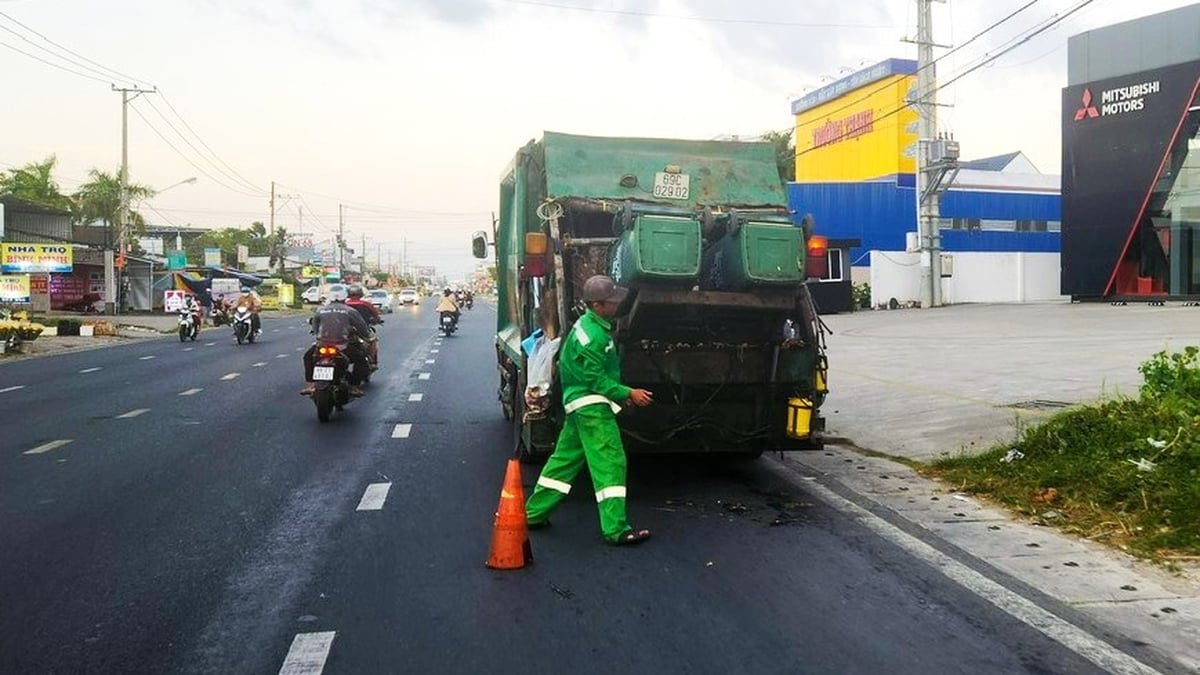












![[Photo] Red and yellow stars at the launching ceremony of the program "Moving Forward with Vietnam"](https://vphoto.vietnam.vn/thumb/1200x675/vietnam/resource/IMAGE/2025/8/16/076df6ed0eb345cfa3d1cd1d7591a66f)
![[Photo] National Assembly Chairman Tran Thanh Man attends the inauguration ceremony of President Ton Duc Thang Memorial House](https://vphoto.vietnam.vn/thumb/1200x675/vietnam/resource/IMAGE/2025/8/16/23555950872d428a8708a1e2f94cbf59)

![[Photo] Prime Minister Pham Minh Chinh talks on the phone with Cambodian Prime Minister Hun Manet](https://vphoto.vietnam.vn/thumb/1200x675/vietnam/resource/IMAGE/2025/8/15/72d3838db8154bafabdadc0a5165677f)
![[Photo] “Moving forward with Vietnam” on the most romantic road in Vietnam](https://vphoto.vietnam.vn/thumb/1200x675/vietnam/resource/IMAGE/2025/8/16/0ee500bc59fd4468863261ee26f47fe7)
![[Photo] Prime Minister Pham Minh Chinh attends a special art program called "Hanoi - From the historic autumn of 1945"](https://vphoto.vietnam.vn/thumb/1200x675/vietnam/resource/IMAGE/2025/8/15/c1c42655275c40d1be461fee0fd132f3)

![[Photo] General Secretary attends the inauguration ceremony of the Ministry of Public Security Headquarters](https://vphoto.vietnam.vn/thumb/1200x675/vietnam/resource/IMAGE/2025/8/16/3ceec3a24ef945c18ae2b523563b749d)



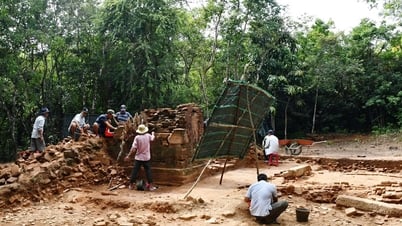





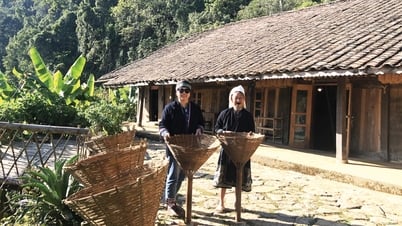






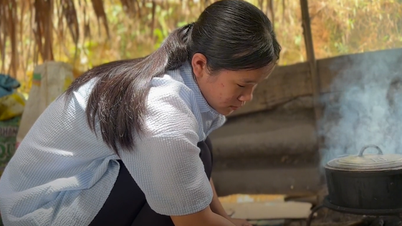



















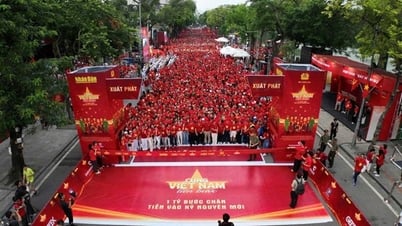






























Comment (0)